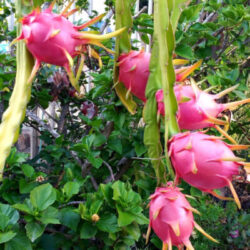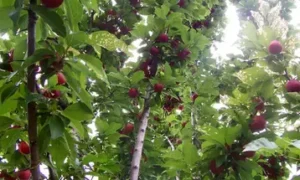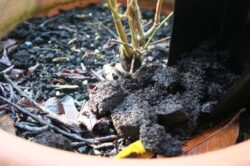
What is Dragon Fruit?
Dragon fruit, also known as pitaya, is a tropical fruit that belongs to the cactus family. It is native to Central America but is now cultivated and enjoyed in various parts of the world, including Asia, Australia, and the United States. Dragon fruit has a unique and vibrant appearance with its vibrant skin color and distinctive scale-like patterns. The fruit comes in several varieties, with the most common ones being the white-fleshed and red-fleshed varieties.
Dragon fruit is known for its sweet and refreshing taste. The texture of the fruit is often compared to a kiwi due to its small black seeds and soft, juicy flesh. The flavor profile can vary slightly between different varieties, but it is generally described as mildly sweet with a subtle hint of tanginess.
Aside from its appealing taste, dragon fruit is also renowned for its nutritional benefits. It is a good source of antioxidants, vitamins (especially vitamin C), and minerals such as iron and magnesium. Dragon fruit is low in calories and fat, making it a popular choice for those seeking a healthy and delicious snack.
Dragon fruit has gained popularity in recent years due to its exotic appearance and health benefits. It is commonly consumed fresh, either by cutting it in half and scooping out the flesh or by peeling off the skin and slicing it. Dragon fruit is also used in smoothies, salads, desserts, and various culinary creations, thanks to its eye-catching color and subtle flavor that complements a variety of dishes.
Overall, dragon fruit is not only visually striking but also offers a delightful taste and numerous nutritional advantages, making it a fascinating and sought-after fruit in many parts of the world.
Origins and Varieties of Dragon Fruit
Origins and Varieties of Dragon Fruit
- Origins of Dragon Fruit
a. Native Habitat: Central America
b. Historical Cultivation and Spread - White-Fleshed Dragon Fruit Varieties
a. Physical Characteristics and Flavor Profile
b. Examples of White-Fleshed Varieties - Red-Fleshed Dragon Fruit Varieties
a. Physical Characteristics and Flavor Profile
b. Examples of Red-Fleshed Varieties - Yellow Dragon Fruit Varieties
a. Physical Characteristics and Flavor Profile
b. Examples of Yellow Dragon Fruit Varieties - Hybrids and Unique Dragon Fruit Varieties
a. Crossbreeding and Development of Hybrids
b. Unique Varieties with Distinct Characteristics - Regional Variations and Cultivation Preferences
a. Dragon Fruit Varieties Popular in Asia
b. Dragon Fruit Varieties Popular in the Americas
c. Dragon Fruit Varieties in Other Parts of the World - Selecting Dragon Fruit Varieties for Cultivation
a. Considerations for Climate and Growing Conditions
b. Personal Preferences and Desired Characteristics
Also Read : what Is the National Fruit of Ukraine
Nutritional Benefits of Dragon Fruit
Nutritional Benefits of Dragon Fruit
- High in Antioxidants: Dragon fruit is rich in antioxidants, which help protect the body against harmful free radicals and reduce the risk of chronic diseases.
- Vitamin C Boost: Dragon fruit is an excellent source of vitamin C, which supports the immune system, promotes collagen production, and enhances iron absorption.
- Rich in Fiber: Dragon fruit contains a good amount of dietary fiber, which aids in digestion, promotes a healthy gut, and helps regulate blood sugar levels.
- Heart-Healthy: The low cholesterol and saturated fat content of dragon fruit make it a heart-healthy choice. It also contains beneficial monounsaturated fats that support cardiovascular health.
- Hydration: With its high water content, dragon fruit is a hydrating fruit that can help maintain proper hydration levels in the body.
- Source of Essential Minerals: Dragon fruit provides essential minerals like iron, calcium, phosphorus, and magnesium, which are important for bone health, muscle function, and overall well-being.
How to Grow Dragon Fruit From Seeds And Cuttings
Steps to Grow Dragon Fruit from Seeds and Cuttings
Growing Dragon Fruit from Seeds:
- Seed Selection: Obtain dragon fruit seeds from a reputable source or collect them from ripe dragon fruits. Choose healthy, mature seeds for better germination success.
- Seed Preparation: Gently rinse the seeds with water to remove any pulp or residue. Soak the seeds in water for 24 hours to enhance germination.
- Seed Planting: Fill seed trays or small pots with well-draining cactus or succulent potting mix. Plant the seeds about ¼ inch deep in the soil and lightly cover them.
- Germination and Seedling Care: Place the trays or pots in a warm and bright location with temperatures around 75-85°F (24-29°C). Keep the soil slightly moist, but avoid overwatering. Germination typically takes 1-3 weeks.
- Seedling Transplanting: Once the seedlings have developed 2-4 true leaves, they can be transplanted into larger pots or a prepared garden bed. Choose a sunny location with well-draining soil.
Also Read: How to Keep Squirrel out of Fruits trees
Growing Dragon Fruit from Cuttings:
- Cutting Selection: Select healthy, mature dragon fruit stems or branches for cuttings. Choose sections that are at least 12-18 inches long and have several segments.
- Cutting Preparation: Allow the cuttings to dry and callus for a few days by placing them in a shaded area. This helps prevent rot when planting.
- Planting the Cuttings: Fill a pot or prepared garden bed with well-draining soil. Plant the cuttings about 6-8 inches deep, burying at least 2-3 segments in the soil. You can also use stakes or trellises to support the cuttings.
- Rooting and Establishment: Place the planted cuttings in a warm and sunny location. Water the cuttings sparingly to avoid overwatering. Roots will start to develop in a few weeks to a couple of months. Avoid disturbing the cuttings during this time.
- Caring for Seedlings and Cuttings: Provide regular waterings, but ensure the soil is well-draining to prevent waterlogged conditions. Protect the young plants from extreme temperatures and frost. Provide support as the plants grow taller by tying them to stakes or trellises.
- Maintenance and Care: Maintain a regular watering schedule, especially during dry spells. Apply a balanced fertilizer every few months to promote healthy growth. Prune the plants as needed to shape and control growth. Protect the plants from pests and diseases by monitoring and taking appropriate measures.
Remember, growing dragon fruit from seeds and cuttings requires patience and consistent care. It can take several years for the plants to mature and start producing fruits. However, with proper attention and suitable growing conditions, you can enjoy the beauty and bountiful harvest of your dragon fruit plants.
Popular Culinary Uses of Dragon Fruit
- Fresh and Raw: Dragon fruit is commonly enjoyed fresh and raw. Simply slice it open and scoop out the flesh to eat it as is or add it to fruit salads for a burst of color and flavor.
- Smoothies and Juices: Dragon fruit is a popular ingredient in smoothies and juices, adding a vibrant hue and a mild, refreshing taste. Blend it with other fruits, yogurt, or coconut water for a nutritious and delicious beverage.
- Desserts and Sweets: Dragon fruit is often used in desserts, such as sorbets, ice creams, and puddings, due to its natural sweetness and striking appearance.
- Sauces and Dressings: The flesh of dragon fruit can be pureed and used as a base for sauces and dressings, adding a unique flavor and a beautiful pink hue.
- Cocktails and Mocktails: Dragon fruit makes an excellent addition to cocktails and mocktails. Its vibrant color and subtle taste can elevate the visual appeal and taste of beverages.
- Garnish and Decorations: The visually stunning appearance of dragon fruit makes it a popular choice for garnishing dishes and creating eye-catching food presentations.
Remember, dragon fruit’s flavor is quite mild, allowing it to blend well with other ingredients. Its versatility and aesthetic appeal make it a versatile ingredient in various culinary creations.
Unique Features and Appearance of Dragon Fruit
Unique Features and Appearance of Dragon Fruit
- Exotic Appearance: Dragon fruit is known for its exotic and eye-catching appearance. It has a distinct shape, resembling a large oval or elongated egg, with a scaly or spiky outer skin.
- Vivid Colors: Dragon fruit comes in different vibrant colors, ranging from deep magenta and bright pink to yellow and white. The color intensity can vary depending on the variety and ripeness of the fruit.
- Scales or Spikes: The outer skin of dragon fruit is covered in scales or spikes, giving it a unique texture and appearance. These scales are typically green in color but can turn brown or yellow as the fruit ripens.
- Leafy Extensions: At the tip of the fruit, there are often small, leaf-like extensions known as bracts. These bracts are usually green in color and add to the distinctive look of the dragon fruit.
- Intriguing Flesh: When cut open, dragon fruit reveals its intriguing flesh, which can be either white, red, or yellow, depending on the variety. The flesh is speckled with tiny black seeds, similar to those found in kiwi fruit.
- Mild Fragrance: Dragon fruit has a delicate and mild fragrance that is subtle and pleasing. The aroma is not overpowering, allowing the fruit to blend well with other ingredients in various culinary preparations.
- Size and Weight: Dragon fruit can vary in size, typically ranging from 6 to 12 inches in length. The weight of the fruit can range from around 150 grams to over 1 kilogram, depending on the variety and ripeness.
- Unique Growth Habit: Dragon fruit grows on a climbing cactus-like plant known as Hylocereus. The plant has sprawling, vining stems with aerial roots that cling to structures for support.
- Night-Blooming Flowers: Dragon fruit plants produce stunning night-blooming flowers, which are usually large, fragrant, and white. These flowers only bloom for one night and are pollinated by nocturnal creatures like bats and moths.
The unique features and appearance of dragon fruit make it not only a delicious and nutritious fruit but also an intriguing and visually appealing addition to culinary creations and ornamental displays.
Why Grow Dragon Fruit from Seeds and Cuttings
Why Grow Dragon Fruit from Seeds and Cuttings
- Cost-Effective: Growing dragon fruit from seeds and cuttings can be a cost-effective way to start your own dragon fruit plantation or garden. Seeds and cuttings are generally more affordable compared to purchasing mature plants.
- Genetic Diversity: Growing dragon fruit from seeds allows for the potential of genetic diversity. Each seed has the potential to produce a unique plant with different traits, flavors, and colors, adding variety to your collection.
- Exploration and Experimentation: Growing dragon fruit from seeds and cuttings allows you to explore different varieties and experiment with various cultivation techniques. You can try different seed sources, crossbreed different varieties, or select specific characteristics you desire in your plants.
- Self-Sufficiency: By growing dragon fruit from seeds and cuttings, you can become self-sufficient in producing your own plants. You won’t have to rely solely on purchasing plants from external sources, giving you more control over the quality and quantity of your dragon fruit plants.
- Learning Experience: Growing dragon fruit from seeds and cuttings offers a valuable learning experience. You can observe and understand the entire growth cycle of the plant, from seed germination to maturity. This hands-on experience helps you gain knowledge about plant propagation, care, and maintenance.
- Adapting to Local Conditions: When you grow dragon fruit from seeds and cuttings, you can select plants that are more adapted to your specific climate and growing conditions. This increases the chances of successful growth and productivity of your dragon fruit plants.
- Preservation of Unique Varieties: Growing dragon fruit from seeds and cuttings allows for the preservation and propagation of unique varieties. You can cultivate and preserve rare or heirloom dragon fruit varieties that may not be readily available in commercial markets.
- Sharing and Trading: Growing dragon fruit from seeds and cuttings gives you the opportunity to share or trade plants with fellow gardening enthusiasts. It fosters community engagement and allows you to exchange different varieties or introduce dragon fruit to others.
Overall, growing dragon fruit from seeds and cuttings offers numerous advantages, including cost savings, genetic diversity, learning opportunities, and the ability to adapt to local conditions. It allows you to be more self-sufficient and explore the fascinating world of dragon fruit cultivation.
Caring and Maintenance for Dragon Fruit Plants
Caring for Dragon Fruit Seedlings and Cuttings:
- Watering:
- Provide regular waterings to keep the soil lightly moist. Avoid overwatering, as it can lead to root rot.
- Water the plants deeply, allowing the water to penetrate the root zone. Then, allow the topsoil to dry slightly before watering again.
- Adjust the watering frequency based on the weather conditions and the moisture levels of the soil.
- Sunlight and Temperature:
- Dragon fruit thrives in full sun exposure, preferably 6-8 hours of direct sunlight per day. Place the seedlings or cuttings in a location with ample sunlight.
- Ensure a warm and consistent temperature for optimal growth. Dragon fruit prefers temperatures between 65-90°F (18-32°C).
- Soil and Drainage:
- Plant dragon fruit seedlings or cuttings in well-draining soil. Use a cactus or succulent potting mix or create a well-draining soil mixture with a blend of compost, sand, and perlite.
- Ensure proper drainage to prevent waterlogged conditions, which can lead to root rot. Raised beds or containers with drainage holes can be used.
- Support and Training:
- Provide support for the growing dragon fruit plants. As they grow taller, use stakes or trellises to support their climbing stems.
- Gently tie the stems to the support structure with soft ties or twine, allowing them to grow upward and spread out.
- Fertilization:
- Apply a balanced fertilizer specifically formulated for cacti and succulents. Follow the manufacturer’s instructions for application rates and frequency.
- Fertilize the plants during the active growing season, typically from spring to early fall. Reduce or stop fertilization during the winter months.
- Pruning and Training:
- Prune dragon fruit plants to shape and control growth. Remove any dead, damaged, or diseased stems or branches.
- Encourage branching by selectively pruning the tips of the stems. This promotes the development of side shoots and a bushier growth habit.
- Pest and Disease Management:
- Monitor the plants regularly for common pests such as mealybugs, aphids, or scale insects. Use insecticides or organic pest control methods if necessary.
- Watch for signs of diseases like root rot, fungal infections, or stem rot. Improve drainage, provide proper airflow, and use fungicides as needed.
- Winter Care:
- In cooler climates, protect dragon fruit plants from frost and freezing temperatures. Move potted plants indoors or provide them with adequate insulation and coverings.
- Reduce watering during the dormant period in winter, allowing the soil to dry out slightly between waterings.
By providing proper care, attention, and maintenance to your dragon fruit seedlings and cuttings, you can encourage healthy growth, establishment, and eventually enjoy a bountiful harvest of delicious dragon fruits.
Common Challenges and Troubleshooting
Common Challenges and Troubleshooting when Growing Dragon Fruit from Seeds and Cuttings:
- Slow or No Germination:
- Ensure that the seeds are fresh and viable.
- Maintain a warm and consistent temperature during germination.
- Check the moisture levels of the soil and ensure it is lightly moist, not saturated.
- Provide sufficient light for seedlings.
- Poor Rooting of Cuttings:
- Allow cuttings to callus properly before planting.
- Ensure the planting medium is well-draining to prevent root rot.
- Avoid overwatering, as excessive moisture can hinder rooting.
- Provide a warm and sunny environment for rooting.
- Yellowing or Wilting Seedlings/Cuttings:
- Check for overwatering or underwatering. Adjust the watering frequency accordingly.
- Ensure proper drainage to prevent waterlogged conditions.
- Check for pests such as fungus gnats or root rot. Treat as necessary.
- Assess the sunlight exposure. Dragon fruit requires bright, indirect light.
- Stunted Growth or Lack of Fruit Production:
- Evaluate the growing conditions. Dragon fruit thrives in warm and sunny environments.
- Check for nutrient deficiencies and adjust fertilization accordingly.
- Ensure adequate pollination. Hand-pollination may be necessary if natural pollinators are scarce.
- Assess pruning practices. Prune properly to promote healthy growth and branching.
- Pest and Disease Issues:
- Monitor the plants regularly for common pests like mealybugs, aphids, or scale insects. Treat with appropriate insecticides or organic remedies.
- Check for signs of diseases such as root rot, fungal infections, or stem rot. Improve drainage and adjust watering practices if necessary. Apply appropriate fungicides as needed.
- Environmental Factors:
- Protect the plants from extreme temperatures, frost, or harsh weather conditions.
- Provide support for climbing stems to prevent breakage.
- Ensure proper airflow and ventilation to prevent fungal issues.
- Lack of Fruit Set or Poor Fruit Quality:
- Assess pollination practices. Ensure proper cross-pollination if growing multiple varieties.
- Evaluate nutrient levels and adjust fertilization if necessary.
- Monitor for water stress. Ensure consistent watering, especially during fruiting periods.
By addressing these common challenges and troubleshooting issues promptly, you can increase the chances of successful growth and a thriving dragon fruit garden. Remember to observe the plants regularly, make adjustments when needed, and provide proper care and maintenance throughout the growth cycle.
Conclusion
Growing dragon fruit from seeds and cuttings can be a rewarding and enjoyable experience. Dragon fruit, with its unique appearance, nutritional benefits, and culinary versatility, has gained popularity among gardening enthusiasts and fruit lovers alike.
By following the steps to grow dragon fruit from seeds and cuttings, you can take control of the entire growth process, from selecting the seeds or cuttings to nurturing them into mature and productive plants. This approach allows for genetic diversity, experimentation, and the preservation of unique varieties.







